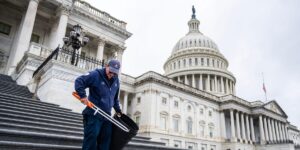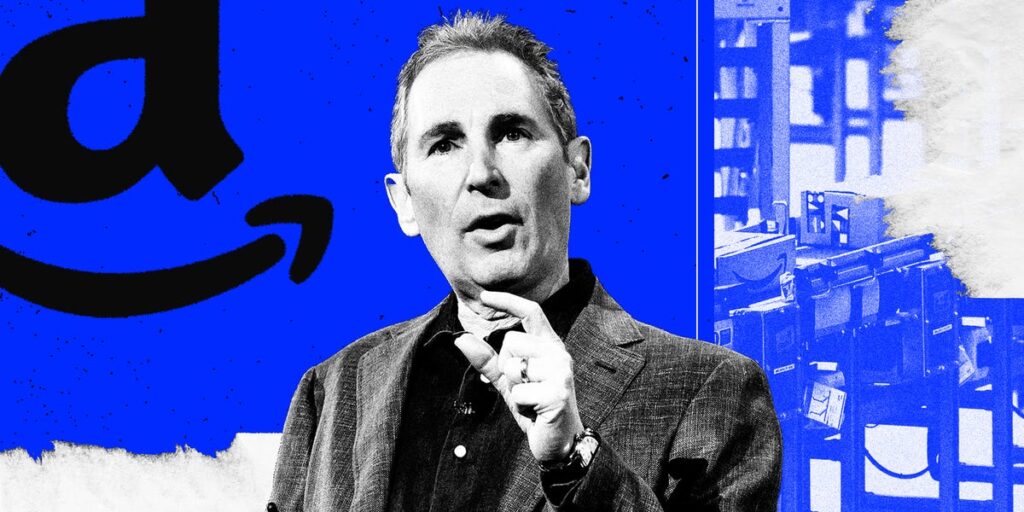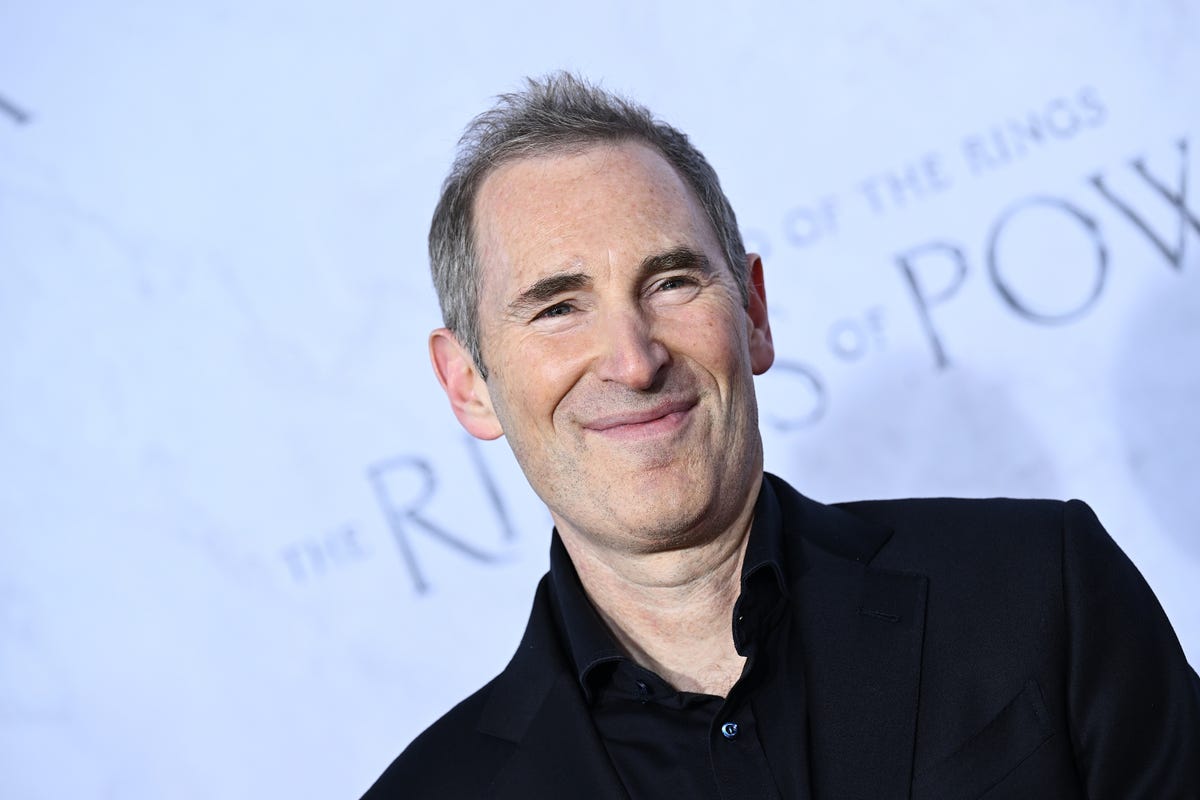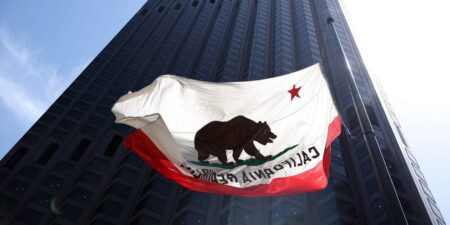Amazon CEO Andy Jassy is reshaping how Amazon works.
In the past year, the company has slashed layers of management, increasing worker-to-manager ratios by 15%. He’s enforced strict cost discipline, down to monitoring how employees’ company-issued phone use is work-related. He’s updated performance metrics and pay structures. He’s sent the vast majority of corporate employees back to the office five days a week. He’s created a “bureaucracy mailbox,” to which employees are encouraged to flag unnecessary processes or rules that could be streamlined or eliminated; Amazon says the initiative has already led to 375 changes.
For Jassy, who took over from Jeff Bezos four years ago, the goal has been to restore the urgency and discipline that once defined Amazon’s DNA and had begun to atrophy, following a period of stratospheric growth and then massive losses as the bottom fell out of the pandemic-era boom.
It’s about getting Amazon back to what made it so successful in the first place.
As Jassy explained at an internal all-hands earlier this year, a record of which was obtained by Business Insider: “We want to operate the world’s largest startup at our size — that has not been done before. It is hard to do, but it is doable.”
By many measures, the reset is working. Amazon’s stock is up more than 30% over the past year, outperforming the tech-heavy Nasdaq. Amazon’s profit per employee rose to $44,100 last year — more than five times the 2022 figure.
“During the pandemic, I think creativity suffered to some extent, and for sure the cohesive culture that was peculiar to Amazon also suffered,” Babak Parviz, a former Amazon vice president who is now running his own AI healthcare startup NewDays, told Business Insider. “Andy is rightfully focusing on making sure that the Amazon culture is maintained and thriving, and it doesn’t dissipate away.”
And under Jassy’s leadership, Amazon has been at the forefront of corporate America’s cultural shift. Meta, Google, and Microsoft have all tightened their performance expectations, though their return to the office mandates are still less strict than Amazon’s. Old guard companies like AT&T have similarly taken a stricter stance on office culture.
“We want owners. What would I do if this was my money?”
As Jassy enters his fifth year leading Amazon, his leadership has been defined less by any single product or splashy hire, but rather by his revamp of Amazon’s culture as he tries to recapture Bezos’ “always Day 1” mindset and position the tech giant to thrive.
A close reading of that effort — Jassy’s hardline approach to employee management and of his laser focus on a more nimble, do-more-with-less culture — has created a playbook that leaders of companies large and small could study, even if not everyone would embrace his approach.
Amazon’s return to a hardcore mindset was born out of a growing concern among Jassy and his top brass that the tech giant’s famously scrappy, ruthlessly efficient culture had taken a hit during the company’s years of explosive growth, according to people familiar with their thinking.
Layers of bureaucracy, which had settled like sediment as the company continued to grow, were slowing things down, struggling initiatives needed to be streamlined, and a flexible work-from-home policy meant that a lot of employees who’d joined during and after the pandemic had never been properly integrated into Amazon’s way of doing things.
Jassy zeroed in on the need to focus on culture early on in his tenure as CEO. But it was a few years before he and his senior leadership were able to do much about it, according to Drew Herdener, the company’s senior vice president of communications and corporate responsibility.
Back in the summer of 2021, when Jassy replaced founder Jeff Bezos and became Amazon’s second-ever CEO, the tech giant was expanding at a breakneck pace. A hiring spree of historic proportions had minted Amazon as the second biggest private employer in the US, after Walmart. The company was also on track to eclipse Walmart as the world’s largest retailer outside China, with a delivery network to rival UPS.
Over the next three years, Amazon went on a rollercoaster of devastating losses and extraordinary gains.
In late 2022, as the bottom fell out of the pandemic boom, Amazon became the first company to shed $1 trillion in market value — a figure just shy of the entire value of Alphabet, Google’s parent company. Senior executives had been leaving in droves, and an internal report at the time, seen by Business Insider, bluntly warned that Amazon’s public image was “in need of immediate, significant repair.”
Michael Batnick, director of research at Ritholtz Wealth Management, even floated the idea on CNBC that Bezos might need to return as CEO “to steady the ship.”
But by the summer of 2024, Amazon had laid off nearly 30,000 employees, streamlined its cost structure, and downsized a number of projects, including its moonshot lab Grand Challenge. Amazon had not only stemmed its losses but surpassed a $2 trillion market cap, and Jassy was being credited with an extraordinary turnaround.
Once the dust had settled, there was a sense that Amazon would need to better integrate the surge of new hires from the early days of the pandemic into Amazon’s corporate culture.
One former executive noted that maintaining Amazon’s famed memo-writing culture was especially challenging for new hires more accustomed to PowerPoint presentations. Many also struggled to fully embrace the company’s Leadership Principles, which are deeply embedded in how Amazon operates. Productivity slipped, and as Jassy puts it, “riffing” on new ideas got harder with remote work. While it reached record profits, Amazon grappled with the layers of bureaucracy and the growing perception of falling behind in AI.
“It was more difficult to make sure that the new employees really understood what the culture was, just because it was growing so fast.” Parviz said.
By last fall, Jassy was pressing that culture reset and his war on Amazon’s bureaucracy into full throttle.
A glimpse into Amazon’s more disciplined, hardcore culture came in July, when an Amazon advertising director sent senior managers a sharply worded email titled “Raising Our Leadership Standard.”
Amazon wanted to see “higher productivity” and “more competitive leadership roles,” he wrote, according to the email obtained by Business Insider. “I need every leader on this team to step into the arena and commit to this higher standard. If they can’t or won’t, I need them to leave ASAP.”
Amazon’s spokesperson told Business Insider that the email is “unrelated to or reflective of Andy’s strengthening our culture and teams initiative.” Instead, Amazon’s culture has always been “performance-driven and fast-paced” and the company is “getting back to our roots,” the spokesperson said.
“It’s unsentimental,” says one former executive. “If numbers don’t work, they just move on.”
In staff meetings, company executives hammer home the importance of frugality, making it a recurring theme in internal discussions and decision-making.
“We want owners,” Jassy said at a company staff meeting earlier this year, a record of which was obtained by Business Insider. “What would I do if this was my money?”
The best leaders, Jassy stressed, are those who “get the most done with the least amount of resources required to do the job.”
Amazon has also revamped its compensation system to reward high performers more directly. The new structure puts greater emphasis on an employee’s performance history, with those earning top marks for four consecutive years now eligible for pay increases that exceed the standard compensation bands.
Jassy’s latest push has been to reinforce Amazon’s operating DNA, which centers on the company’s Leadership Principles — the 16 core values that shape decision-making at every level and are deeply embedded in how Amazon operates.
This year, the company formally incorporated adherence to those principles into performance reviews for the first time, tying them directly to pay and promotions. That followed a new video series Jassy launched last year, breaking down each principle, from “Customer Obsession” and “Frugality” to “Disagree and Commit.”
“I’ve been at Amazon now for 27 years, and I can tell you that I still consider myself a student of our Leadership Principles,” Jassy wrote in a note announcing the launch of an internal video series explaining his take on each LP. “I work hard at it every day.”
Many of these changes have come with headaches. The return-to-office rollout has been bumpy, with complaints about desk shortages and other logistical headaches.
Complaints have also come from middle-managers, who say they’re now spending far more time overseeing ever-larger teams, leading to longer hours and a drop in personal productivity.
Junior leaders say that major decisions are made by a tight-knit group of top Amazon leaders and that they are often kept out of the loop. Last year, for example, when Jassy announced a full five-day return-to-office mandate and a push to slim down middle management, multiple VPs told Business Insider that they learned about the changes from news reports.
“It’s unsentimental,” a former executive told Business Insider. “If numbers don’t work, they just move on.”
Employees, meanwhile, complain that cost-cutting has veered into micromanagement.
At AWS, some employees now report what percentage of their phone use is work-related, with the $50 monthly reimbursement adjusted proportionally. In retail, employees have complained they must now seek approval for business trips by outlining expected goals and projected returns. They also need to break down expenses by meal to give more details about their spending.
Many Amazon employees say they fear for their job security — especially after Jassy’s recent prediction that “efficiency gains” accomplished with AI would lead to an even smaller white-collar workforce. “It’s just really hard for people to show up at work and be all-in knowing tomorrow might be the last day at work,” a current Amazon executive told Business Insider.
AI is already being jammed into every corner of the business, adding to the pressure, employees say. Some teams now track performance by how frequently staff use AI tools, while others treat having an AI project as little more than a box to tick. Several employees describe the result as “AI fatigue.”
Other Amazonians Business Insider spoke to give Jassy credit for being personable and operating with a more people-focused leadership style. One former executive recalled Jassy taking time during meetings to get to know him personally, a gesture that earned his respect.
“That level of care to make it more humane is a tremendous motivator,” the person said.
Jassy’s cost discipline also reflects a deeper shift in Amazon’s philosophy. Unlike Bezos, who spread bets widely across hundreds of projects — from satellite internet to healthcare moonshots — Jassy prefers to concentrate on a few dozen initiatives he considers big bets, according to people familiar with his work.
“Jassy wants to focus on things that Amazon is uniquely positioned to do a good job on,” one former VP said.
Amazon’s CEO has grown skeptical of an internal metric known as downstream impact, or DSI, the same former VP said. This measure attempts to estimate a project’s lifetime value using imprecise indicators, such as how Alexa might indirectly boost the number of shoppers on Amazon. The voice assistant, once a flagship product, was among the first units to be downsized under Jassy due to its mounting losses and the team’s failure to build a sustainable business model.
In recent years, Jassy has shown particular support for high-margin businesses such as cloud computing and advertising, this person added. Under his leadership, Amazon introduced ads to its video streaming service and ramped up investment in cloud data centers.
Amazon’s spokesperson told Business Insider that the company is “pursuing as many if not more projects in more focused areas,” and the pace of innovation is only accelerating under Jassy. The leadership team is improving its “analysis of DSI” and has no plans to stop measuring it, the spokesperson added.
Still, with so much focus on cost cutting, there’s mounting worry among Amazon’s rank and file that Amazon is not doing enough to appeal to top talent and position itself as a great place to work. (Amazon’s spokesperson disputed this, saying that “interest in joining Amazon remains as strong as it’s ever been.”)
That worry dates back to late last year, just as Jassy’s reset plan was coming into focus. An internal document created by Amazon’s recruiting team and obtained by Business Insider noted that the rigid RTO mandate and the company’s unique pay model are making it harder to recruit “high demand” talent.
“GenAI hiring faces challenges like location, compensation, and Amazon’s perceived lag in the space,” the document said. “Competitors often provide more comprehensive and aggressive packages.”
One Amazon recruiter told Business Insider that a growing number of job candidates last year had cited Amazon’s RTO policy when declining offers.
“We are losing out on talent,” this person said.
Business Insider’s Discourse stories provide perspectives on the day’s most pressing issues, informed by analysis, reporting, and expertise.
Read the full article here
















